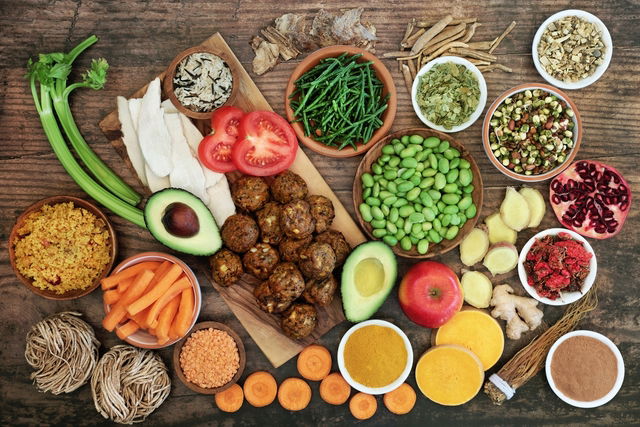A GERD diet should be balanced and varied. It is important to prioritize fruits, vegetables, legumes, whole grains (like whole wheat rice or pasta) and lean proteins (like white fish, eggs or chicken).
When treating GERD, you should avoid foods that are difficult digest, as these tend to cause more gas and can be irritating to the stomach. Some examples include fried foods, salty snacks, refined carbohydrates (like white bread), white pasta, sweets, and food with caffeine (like chocolate and coffee).
Acid reflux is characterized by the back-up of stomach acid into the esophagus. It tends to happen after meals, and can cause symptoms like heart burn, pain with swallowing and burping. Treatment mainly consists of diet changes, however the doctor may recommend medications or even surgery if symptoms do not improve with diet.

Foods to eat
The types of foods that are permitted in a GERD diet are fresh fruits or vegetables, low fat meats (like skinless chicken or turkey), white fish and eggs.
Milk and dairy products should be low in fat. You should opt for skim options and white cheeses, like ricotta or cottage cheese.
If you currently have symptoms like a stomachache, heartburn or nausea, you should consume foods that are easy to digest and don’t stay for long periods in the stomach. Some examples include white rice, potatoes, sweet potatoes and white pasta. However, if you do not have any active symptoms, you should eat fiber-rich carbohydrates like whole wheat rice, whole wheat pasta, whole wheat bread, potatoes with the peel and legumes like chickpeas, lentils and beans.
Healthy fats, like olive oil, walnuts and chestnuts should be consumed in small dervings. You can also incorporate ginger into your diet or drink ginger tea, as it contains natural anti-inflammatory properties that can improve acid reflux symptoms.
Chamomile tea is another great option to incorporate into your diet, as it can improve indigestion and soothe acidity and upset stomach.
3-day GERD meal plan
The following table outlines a 3-day meal plan for acid reflux:
The quantities in this meal plan may vary depending on your age, gender, activity level and healthy history. Therefore, you should consult a registered dietitian about a meal plan that meets your individual needs.
Foods to avoid
The food we eat directly influences the amount of acid our stomach produces. You should limit the ingestion of foods that increase acid concentration, as this can help to improve GERD symptoms in some people.
It is important to highlight that the foods that trigger symptoms may vary from person to person. It is important to identify which foods worsen your symptoms and avoid consuming them.
Foods that may worsen acid reflux include:
- Fatty foods: These tend to digest at a slower rate and stay in the stomach for longer periods. This can delay gastric emptying and increase acid production. Examples include red meat, sausages, mortadella, french fries, sauces, mayonnaise, croissants, cookies, cake, pizza, yellow cheeses, butter, margarine, lard, bacon, milk and dairy products.
- Caffeine: This substance can irritate the stomach lining, which can lead to reflux. You should avoid foods that contain caffeine, like coffee, black tea, green tea, tea mate, soda, energy drinks and chocolate.
- Alcoholic drinks: You should particularly avoid fermented drinks, like beer and wine, as these irritate the stomach and increase stomach acid production.
- Gassy drinks: Like soda and mineral water, as they increase pressure within the stomach and cause discomfort.
- Mint and spearmint: These plants can also increase acid reflux and may irritate the stomach lining.
- Pepper, spicy sauces and ready-made sauces: These foods can irritate the stomach lining and lead to increased stomach acid, resulting in GERD symptoms.
Some people, especially those with a history of esophagitis, may also experience symptoms after consuming acidic foods, like oranges, pineapple, strawberries, lemons, passionfruit or tomatoes. These food should also be avoided.
Other considerations
In addition to diet, there are other factors that can also reduce acid reflux, like:
- Eating many small meals or snack per day, every 2 to 3 hours
- Avoiding drinking when eating
- Not eating 3 to 4 hours before going to bed
- Chewing your meals carefully and eating at a slow pace
- Seeing a registered dietitian if you are overweight to help facilitate weight loss
- Sleeping at a 45 degree angle, by placing a pillow or raising the head of the bed to reduce reflux at night
- Avoiding tight clothing and belts, as these can increase stomach pressure
It is also important to reduce or quit smoking and to manage stress, as these also contribute to acid reflux. Learn about natural home remedies for acid reflux that you can try at home.
